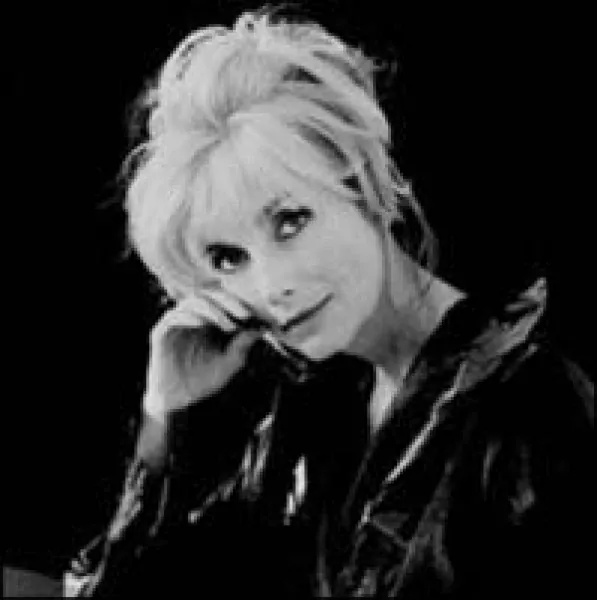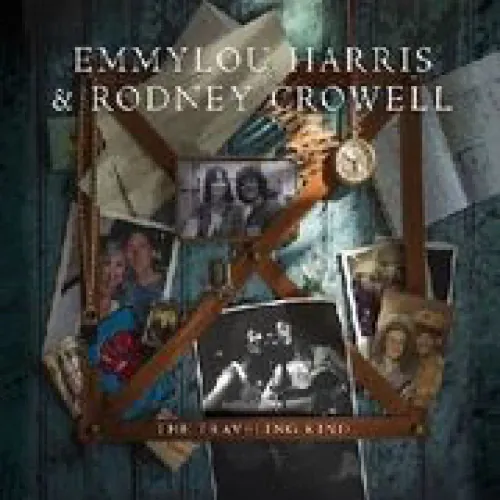
Emmylou Harris
Top Emmylou Harris albums
Top Emmylou Harris lyrics
(lost His Love) On Our Last Date
Emmylou Harris(Lost His Love) On Our Last Date (Live)
Emmylou HarrisEmmylou Harris biography
Though other performers sold more records and earned greater fame, few left as profound an impact on contemporary music as Emmylou Harris. Blessed with a crystalline voice, a remarkable gift for phrasing, and a restless creative spirit, she traveled a singular artistic path, proudly carrying the torch of "Cosmic American music" pa**ed down by her mentor, Gram Parsons. With the exception of only Neil Young -- not surprisingly an occasional collaborator -- no other mainstream star established a similarly large body of work as consistently iconoclastic, eclectic, or daring; even more than three decades into her career, Harris' latter-day music remained as heartfelt, visionary, and vital as her earliest recordings.br /br /Harris was born on April 2, 1947, to a military family stationed in Birmingham, AL. After spending much of her childhood in North Carolina, she moved to Woodbridge, VA, while in her teens, and graduated high school there as cla** valedictorian. After winning a dramatic scholarship at the University of North Carolina, she began to seriously study music, learning to play songs by Bob Dylan and Joan Baez. Soon, Harris was performing in a duo with fellow U.N.C. student Mike Williams, eventually quitting school to move to New York, only to find the city's folk music community dying out in the wake of the psychedelic era. br /br /Still, Harris remained in New York, traveling the Greenwich Village club circuit before becoming a regular at Gerdes Folk City, where she struck up friendships with fellow folkies Jerry Jeff Walker, David Bromberg, and Paul Siebel. After marrying songwriter Tom Slocum in 1969, she recorded her debut LP, 1970's Gliding Bird. Shortly after the record's release, however, Harris' label declared bankruptcy, and while pregnant with her first child, her marriage began to fall apart. After moving to Nashville, she and Slocum divorced, leaving Harris to raise daughter Hallie on her own. After several months of struggle and poverty, she moved back in with her parents, who had since bought a farm outside of Washington, D.C.br /br /There she returned to performing, starting a trio with local musicians Gerry Mule and Tom Guidera. One evening in 1971, while playing at an area club called Clyde's, the trio performed to a crowd which included members of the country-rock pioneers the Flying Burrito Brothers. In the wake of the departure of Gram Parsons, the band's founder, the Burritos were then led by ex-Byrd Chris Hillman, who was so impressed by Harris' talents that he considered inviting her to join the group. Instead, Hillman himself quit to join Stephen Stills' Mana**as, but he recommended her to Parsons, who wanted a female vocalist to flesh out the sound of his solo work, a trailblazing fusion of country and rock & roll he dubbed "Cosmic American music." Their connection was instant, and soon Harris was learning about country music and singing harmony on Parsons' solo debut, 1972's GP. A tour with Parsons' backup unit the Fallen Angels followed, and in 1973 they returned to the studio to cut his landmark LP, Grievous Angel.br /br /On September 19, just weeks after the album sessions ended, Parsons' fondness for d** and alcohol finally caught up to him, and he was found dead in a hotel room outside of the Joshua Tree National Monument in California. At the time, Harris was back in Washington, collecting her daughter for a planned move to the West Coast. Instead, she remained in D.C., reuniting with Tom Guidera to form the Angel Band. The group signed to Reprise and relocated to Los Angeles to begin work on Harris' solo major-label debut, 1975's acclaimed Pieces of the Sky, an impeccable collection made up largely of diverse covers ranging in origin from Merle Haggard to the Beatles. Produced by Brian Ahern, who would go on to helm Harris' next ten records -- as well as becoming her second husband -- Pieces of the Sky's second single, a rendition of the Louvin Brothers' "If I Could Only Win Your Love," became her first Top Five hit. "Light of the Stable," a Christmas single complete with backing vocals from Dolly Parton, Linda Ronstadt, and Neil Young, soon followed; Harris then repaid the favor by singing on Ronstadt's "The Sweetest Gift" and Young's "Star of Bethlehem."br /br /For her second LP, 1976's Elite Hotel, Harris established a new backing unit, the Hot Band, which featured legendary Elvis Presley sidemen James Burton and Glen D. Hardin as well as a young songwriter named Rodney Crowell on backup vocals and rhythm guitar. The resulting album proved to be a smash, with covers of Buck Owens' "Together Again" and the Patsy Cline perennial "Sweet Dreams" both topping the charts. Before beginning sessions for her third effort, 1977's Luxury Liner, Harris guested on Bob Dylan's Desire and appeared in Martin Scorsese's documentary of the Band's legendary final performance, The Last Waltz. Quarter Moon in a Ten Cent Town followed in 1978, led by the single "Two More Bottles of Wine," her third number one. The record was Crowell's last with the Hot Band; one of the tracks, "Green Rolling Hills," included backing from Ricky Skaggs, soon to become Crowell's replacement as Harris' vocal partner.br /br /1979's Blue Kentucky Girl was her most country-oriented work to date, an indication of what was to come a year later with Roses in the Snow, a full-fledged excursion into acoustic bluegra**. In the summer of 1980, a duet with Roy Orbison, "That Lovin' You Feelin' Again," hit the Top Ten; a yuletide LP, Light of the Stable, followed at the end of year, with Harris re-releasing the album with three newly recorded bonus tracks in 2004. Shortly afterward, Harris quit touring to focus on raising her second daughter, Meghann. Evangeline, a patchwork of songs left off of previous albums, appeared in 1981. Shortly after, Skaggs left the Hot Band to embark on a solo career; his replacement was Barry Tashian, a singer/songwriter best known for fronting the 1960s rock band the Remains.br /br /In 1982, drummer John Ware, the final holdover from the first Hot Band lineup, left the group; at the same time, Harris' marriage to Ahern was also beginning to disintegrate. After 1981's Cimarron, Harris and the Hot Band cut a live album, Last Date, named in honor of the album's chart-topping single "(Lost His Love) On Our Last Date," a vocal version of the Floyd Cramer instrumental. Quickly, they returned to the studio to record White Shoes, Harris' final LP with Ahern at the helm. Her most far-ranging affair yet, it included covers of Donna Summer's "On the Radio," Johnny Ace's "Pledging My Love," and Sandy Denny's "Old-Fashioned Waltz." br /br /After leaving Ahern, she and her children moved back to Nashville. There, Harris joined forces with singer/songwriter Paul Kennerley, on whose 1980 concept album The Legend of Jesse James she had sung backup. Together, they began formulating a record called The Ballad of Sally Rose, employing the pseudonym Harris often used on the road to veil what was otherwise a clearly autobiographical portrait of her own life. Though a commercial failure, the 1985 record proved pivotal in Harris' continued evolution as an artist and a risk taker; it also marked another chapter in her personal life when she and Kennerley wed shortly after concluding their tour. Angel Band, a subtle, acoustic collection of traditional country spirituals, followed, although the record was not issued until 1987, after the release of its immediate follow-up, Thirteen.br /br /Harris, Dolly Parton, and Linda Ronstadt had first toyed with the idea of recording an album together as far back as 1977, only to watch the project falter in light of touring commitments and other red tape. Finally, in 1987, they issued Trio, a collection which proved to be Harris' best-selling album to date, generating the hits "To Know Him Is to Love Him" (a cover of the Phil Spector cla**ic), "Telling Me Lies," and "Those Memories of You." The record's success spurred the 1990 release of Duets, a compilation of her earlier hits in conjunction with George Jones, Willie Nelson, Gram Parsons, and others. Fronting a new band, the Nash Ramblers, in 1992 she issued At the Ryman, a live set recorded at Nashville's legendary Ryman Auditorium, the former home of the Grand Ole Opry. At the time of the record's release, Harris was also serving a term as President of the Country Music Foundation.br /br /In 1993, she ended her long a**ociation with Warner Bros./Reprise to move to Asylum Records, where she released Cowgirl's Prayer shortly after her separation from Paul Kennerley. Two years later, at a stage in her career at which most performers retreat to the safety of rehashing their greatest hits again and again, Harris issued Wrecking Ball, perhaps her most adventuresome record to date. Produced by Daniel Lanois, the New Orleans-based artist best known for his atmospheric work with U2, Peter Gabriel, and Bob Dylan, Wrecking Ball was a hypnotic, staggeringly beautiful work comprised of songs ranging from the Neil Young-penned title track (which featured its writer on backing vocals) to Jimi Hendrix's "May This Be Love" and the talented newcomer Gillian Welch's "Orphan Girl." br /br /A three-disc retrospective of her years with Warner Bros., Portraits, appeared in 1996, and in 1998 Harris resurfaced with Spyboy. Following the release of Trio II later that year, she and Ronstadt again reunited, this time minus Parton, for 1999's Western Wall: Tucson Sessions. Harris returned the following year with Red Dirt Girl, her first album of original material in five years, which featured appearances from Bruce Springsteen, Patty Scialfa, Jill Cuniff, and Patty Griffin. ~ Jason Ankeny, All Music Guide

